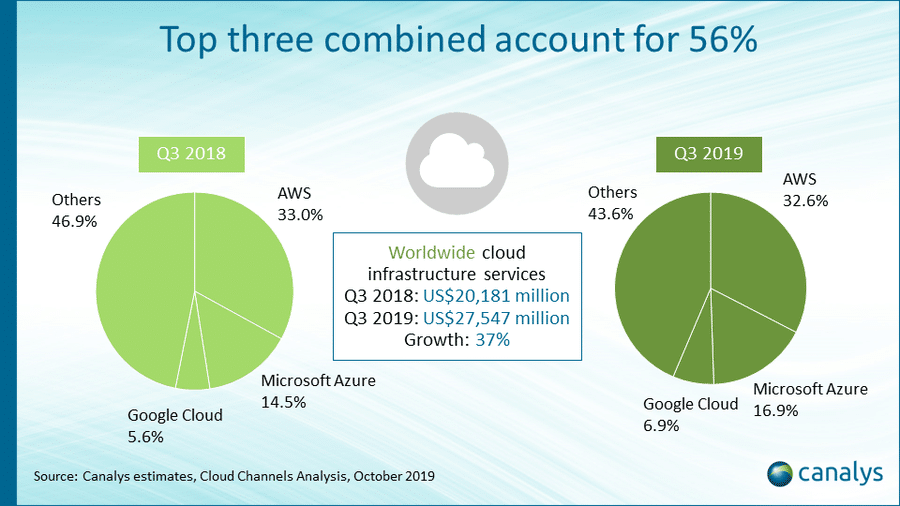It would come as no surprise is the first thing that comes to your mind when your hear “Amazon” is the popular online marketplace or the largest rain forest in the world. What if we told you that there is another Amazon that you should know of – Amazon Web Services (AWS). Yes. This Amazon is related Amazon.com but their reach is far, far greater than just an online marketplace. AWS is a subsidiary of Amazon.com which powers most of the internet. Yep. You read that right! AWS provides the backbone for a majority of the world’s websites, apps and services. They provide a slew of cloud computing infrastructure services which allow many websites, apps and businesses to scale and accommodate sudden spikes in their usage as well as the backbone for cloud based compute services.
Now that you have a general idea of who they are. We’re pretty sure that you’re wondering why you should be paying attention to this company. From what we’ve outlined, it seems like AWS is a very corporate service. So why would the regular joe need to know about it? Here’s three of the compelling reasons you should.
1. Nearly Half of the world’s Cloud Computing Services and Platforms Run AWS
AWS is one of the most omnipresent service providers in the world. Apps, websites, banks and more are using AWS to drive digitalization of their businesses. In fact, in his keynote, Andy Jassy, CEO of AWS, shared that about 47.8% of all services using cloud computing run on the platform. This number puts them far ahead of their nearest competition, Microsoft Azure (15.5%) and Alibaba Cloud (7.7%).

This also means the company’s platform and services are being adopted at a rate much higher than its competition. The AWS platform has an edge over its competition thanks to the extensive services and granularity of the customisation that the service offers.
2. More Companies are adopting Cloud Computing to better serve customers
We’ve talked about Industry 4.0 a whole lot over the past year and the truth is, we’re only at the cusp of it. In the next few years, we will be seeing more and more companies adopt cloud computing as one of their main tools to serve their customers. You may not see this being announced publicly, but nearly all the services that you use from Agoda to Facebook have a cloud computing component to it; whether it’s to hyper personalise their offerings or to have redundancies that will help with making things more seamlessly. With this increased adoption, it may be time to know a little more about how these services are provided.
3. AWS has one of the most complete Cloud Computing services
Amazon Web Services is one of the most complete cloud computing platforms available now. In fact, the company is ahead of the curve when it comes to providing the latest and greatest in cloud computing. AWS currently has over 165 modules or services which it offers its customers. Each of these services can be selectively deployed to meet their customers’ unique needs. With their recent announcement at their annual Re:invent conference, the number of services offered by AWS has grown further.

Very briefly, the company’s offerings span everything from storage, machine learning, artificial intelligence and data processing. The company has announced even more services with a strong focus on allowing its customers to adopt edge computing and better manage and process their data which is being stored in the cloud and even on premises with their new AWS Outpost.
With the companies adoption across the internet becoming more and more popular, AWS is set to become one of the largest cloud computing providers in the world. They’ve even made it into things like the Formula 1 (F1) and National Football League (NFL). You may even see them helping your self driving vehicles in the near future. With that in mind, prepare to find out more about AWS and how they are changing the state of the internet.




